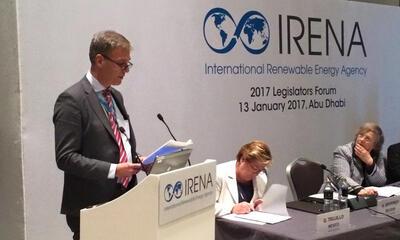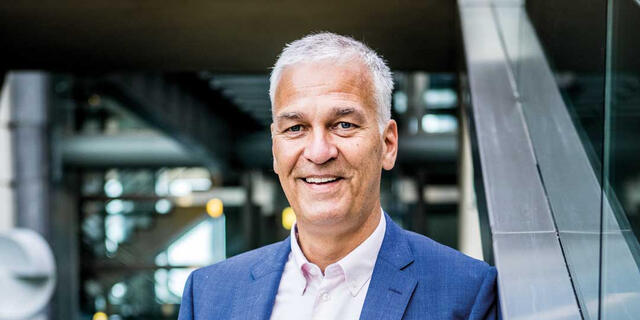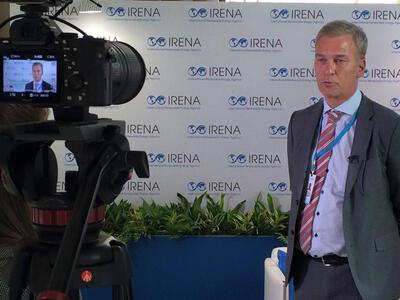
Belgium is a federal state with three regions and three communities. Each has its own parliament, government, administration, strategies & policies, and legislation. There’s no hierarchy of norms, and the competences in climate policy are shared. Regions are responsible for Renewable Energy, distribution grid, energy efficiency, …
There is an agreement on burden sharing between the various entities for the period from 2013 to 2020. This agreement is about the efforts necessary to reduce greenhouse gas emissions, the total share of renewable energy in proportion to consumption, the share in profits from the public sale of ETS CO2 auctioning, and the contribution to the international financing.
The support system in Flanders is a combination of quota and a system of certificates.
In Flanders we provide support with Green Power Certificates (now €97 per MWh). The Unprofitable Top (UT) is set for each form of technology. This depends on the size of the installation, a number of parameters (such as capital expenditure and operating costs, the price of the electricity, the required output, etc), and the time of the application. And so, this is the amount which has to be contributed so that the investment achieves the required output during its lifespan. The proportion of UT and €97 per MWh is the banding factor (Bf) and determines the number of certificates which you get for each MWh produced. The reason for choosing this type of support at the time was that, for instance, feed-in rates used to come under the sole jurisdiction of the federal government, not that of the regions. So we had to find a solution in Flanders. At present, we are investigating whether or not tendering could be a feasible alternative. The ‘legislators’ are hoping that the production of renewable energy will more affordable. For instance, off-shore in Borsele is almost 50% cheaper via tendering or our off-shore. In short, our off-shore is a system of a given concession and combined with negociated Green Power Certificates. Of course the crucial condition is that the government must ensure that they obtain all the necessary licences before tendering (compare with the Netherlands).
What about the future?
On the basis of a tool ‘Scenarios for a Low Carbon Belgium by 2050’, developed for the Belgian Government by agencies such as the Flemish Institute for Technological Research for the Belgian government, we have to conclude that if we want to achieve an 87% reduction in greenhouse gases by 2050 (as compared to 1990), this will be linked to the electrification of the society. This means that primary energy consumption will drop by 39% in 2050 as compared to 2010, but electricity consumption will rise by 62% in 2050 as compared to 2010. This is only possible by means of a combination of efficiency and renewable energy. This will be a combination of electric cars, passive houses with a heat pump, and an industry which is 40% more energy efficient, but, on the supply side, more on and off-shore wind, more solar panels, geothermal energy, solar water heaters, even bio mass, and, obviously, interconnection.
But to achieve all that, you have to get consumers and the market to spring into action. We’re trying to do this with the Flemish parliament from two perspectives.
The first perspective: At present, there are actually two markets in Flanders, namely the renewable green energy market and the grey energy market. They actually operate separately. And you can hardly call the current renewable energy market a market at all. It is largely a subsidised sub-sector of the energy system. Basically, there’s no problem with supporting it in one way or another, certainly for emerging forms of technology, but mature forms of technology have to be subjected to the standard market conditions. It has to be possible to sell renewable energy directly on the market. The support of Green Power Certificates system ensures that there is a risk (not now, but certainly in the future) of producing renewable energy, even though there’s no demand (read: low commodity prices), because the support is there in any case per MWh. In other words, renewable energy, too, must have access to the balancing market. Demand side management has to be developed at all voltage levels i.e. also at low voltage. And so, renewable energy production has to become more ingenious and integrate into the traditional market operation. But to gain equal treatment to the traditional energy market, the legislation has to be stable.
Second perspective: the smart consumer in a smart grid. In Flanders consumers pay an energy cost linked to the net consumption; there is a only slight difference between day and night rates. This is too rigid, however. In future, rates must take much more account, for instance, of the presence of intermittent renewable energy such as wind and sun. However, to do that, we need digital meters, but, linked to an App, these would be ingenious digital meters. Moreover, rates need to reflect network costs better. This means that, in the future, rates for consumers will depend partially on the requested capacity. This means consumers will be motivated to gear their consumption to the presence and intermittence of renewable energy. Certainly if those same consumers themselves are producers, who may also possess a smart home battery. This will involve consumers more in the renewable issue.
Conclusion:
- The renewable energy market must not be allowed to go on operating as a separate market, but must integrate into the existing energy market. But consumers, too, must be given more access to that market. Therefore, they have to be motivated by means of special rates, integrate them in the smart grid; in this way, consumers will benefit if they gear their consumption patterns more towards production, typically for renewable energy.
- Furthermore, legislators must never be allowed to support a form of technology; it’s the market which has to do its work. Legislators merely provide a framework. Yet innovation takes place rapidly, so monitoring is necessary to see whether or not a certain form of technology has reached a level of maturity so that it needs less support.In the future we will look to a more flexible affordable system of Green Power Certificates and tendering for big projects.
- Set your goals high, but keep them realistic; let the market do its work, but don’t oppose the market. Dare to introduce new market models sooner, such as tendering, balancing kWh, if, for instance, you fit solar panels on someone else’s roof, the introduction of smart batteries, storage in general, setting up energy funds, co-operatives,…. So a government has to think flexible, but his policy framework has to be stable.
Link naar de nieuwsbrief 'Review for Parliamentarians'.
Link naar een videoverslag en een interview.




